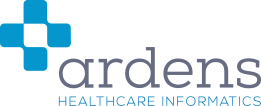Ardens have created a comprehensive suite of templates to help record paediatric conditions, checks and problems.
The available templates include:
- 6-8 Week Baby Checks guidance for all matters to discuss and record when seeing a baby for their national check. It includes a page to record birth details, method of delivery & feeding, plus the standard examination – centiles and milestone etc.
- Abdominal pain in children includes a quick entry page to use in a standard consultation considering what may be causing the pain, plus pages to record more detailed contact information and links to the Bristol Stool chart. There is a patient message section which includes a useful link for parents and a page with useful links for patients, parents and clinical staff.
- Bronchiolitis provides a useful aid for common childhood conditions, with pages record history, examination, management and safeguarding and a link to an advice sheet for patients and resources for clinical professionals.
- Childhood immunisations – as childhood immunisations are part of QOF it is very important to make sure that immunisations are coded correctly. This template lists all of the standard and non-routine, any contract information will be indicated by red text. There is an administrative page to record consent, counselling and height and weight and a page to record PGD and PSD status.
- Constipation in children this template includes pages to record history, examination and management information, including links to the ERIC resources. There is a quick entry page to record a standard consultation and links to professional and patient resources.
- Cow’s milk allergy includes a quick entry page suitable to add information from a standard consultation but also separate pages to record history about the allergy, observations and examination, management and review. There are useful links for the patients parents e.g. iMAP and feeding fact sheets and useful links to guidance for the health care professionals.
- Croup the quick entry page includes history and examination, impression and safety netting. Separate pages with more details follow which have links to patient information leaflets and professional resources about croup.
- Enuresis allows you to record the symptoms and possible causes for bedwetting, there are pages to record history, examination and useful investigations, management and to record any reviews or referrals. There is a message with a useful hyperlink that can be copied and sent to the patient or their parents as well as useful links for the healthcare professional.
- Fever in child < 5yrs amber and red flags are included in both the observation and examination pages in this template making the management easier to plan. Links to guidance on the traffic light system for serious illness in the under 5s as well as advice sheets for parents of young children.
- Paediatric musculoskeletal a quick entry page to record the child’s history, examination and investigations, important conditions to consider and safety netting and follow up but also more detailed pages for individual conditions that the patient may present with including bow legs, curly toes, growing pains and hypermobility which have appropriate professional and patient information links.
- Paediatric/Infant gastro-oesophageal reflux a history page to make recording the most common red flags easier, examination page, management and safeguarding and a page to record any pharmacological intervention and advice given to the patients parents.
- Post-natal newborn baby check includes a standard postnatal baby check with pages to record birth details and examination. The examination page has free text entries that mirror the standard comments for “a normal” consultation of this type. There is a social circumstances page to record any worries about abuse or FGM as well as details about who the child lives with. An administration page to record health education with links to guidance for parents and carers
- Rashes in children the examination page has a body map that can be annotated to show the area and depth of the rash as well as recording respiratory and temperature. Investigation and management pages which include links to the notifiable disease form and the PH infection exclusion table. The resources page has a message with useful hyperlinks that can be copied and sent to the patient’s parent.
- UTI in a child – this template only contains guidance for patients under 16. The assessment page is to record history but will also show previous relevant information about UTI type infections in the patients care history, an examination page including temperature and heart rate etc. The investigations can record the dipstick results and any MSU sent to the lab.
The Paediatric templates are located in the Ardens Live Toolset > Clinical Templates folder.
They may be accessed within the patient record in one of the following ways:
- Click on the Run Template option within the consultation.
- Click on the Add > Data using Template option outside of a consultation.
Clicking on either of the options above will display the Template Picker screen.

Search for the template you require using the search box provided or via the navigation pane. Select the template and click on OK.
Alternatively, you can launch the template using the Template Launcher (All Template Launcher, zTemplate launcher: Paediatric template launcher).
Once you have launched the template. Complete the template using the required fields and ensure you save the information, using the Save option.
If using the template via the Run Template option within an open consultation, you will also need to click Save to save the consultation.
If you require any further assistance on the process above, please contact Ardens support on: support-emis@ardens.org.uk
